“I want to be more flexible” is a statement I get from many of the young athletes I train. My immediate follow up of “Why?” is usually met with a dumb look (or at least a bit dumber than normal). When you question someone why they want to be faster, jump higher, or get stronger they usually have a solid reason. Why they want to get more flexible is often an area they struggle to answer.
Why Are You Stretching?
In certain sports (gymnastics, diving, wrestling, and the various martial arts) having a high level of flexibility is inherent to success in the sport. In many of the other sports (football, baseball, basketball, etc.) flexibility is assumed to improve their performance. But does it? Pretty much every study on stretching and performance measures (vertical, speed, strength) is inconclusive and can be summed up with one phrase: whatever you are doing, keep doing it. Meaning, if you stretch, keep stretching or if you don’t stretch, keep not stretching.
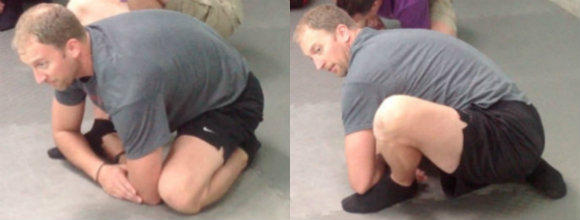
Why then, is the need to stretch so high in many people? “My hamstrings get tight when I [sit for a long time, ride in a car, fill in your own blank.]” So, why do you assume you need to stretch? Because they feel “tight”? Why do they feel tight? What is that tightness?
The body can only support itself and our various limbs through two means: compression and tension. Gravity provides most of the compression, and we provide most of the tension. Load or compress a joint and it becomes more stable. Activate a muscle group and that area becomes more stable (hence all of the “core” training to stabilize the lumbar spine). This tension can actually accomplish two thing:
- It can generate movement (as in the glutes firing to drive up out of a deep squat).
- It can generate stability (as every other muscle that is active during a squat keeping us from exploding).
This tension is expressed in the muscles, but it comes from the brain. Whether consciously (for movement) or subconsciously (as in feed forward tension/stability) a signal is sent from the corresponding motor cortex in the brain (the outer covering of the brain) down a neural pathway (nerve) to the group of muscles the nerve innervates. This nerve impulse creates a chemical change in the muscle spindles (action potential) that causes the muscle spindles to turn on. They stay on until the action potential is removed and then they turn off (relax). So, basically, we give our muscles way too much credit—all they do is respond to a signal from the brain to turn on.

When there is tension, the brain has sent the signal to that region that these muscles need to turn on. If they aren’t moving, they are probably being called on to stabilize. So, why when we sit do our hamstrings get tight? Typically, in chairs and cars, we have the aid of a backing to support our trunk—this essentially allows our trunk muscles to turn off. We still have to stabilize our pelvis in order to balance our spinal column on it and use our upper extremities, so not everything gets to relax. In a seated position, our psoas and hamstrings are tasked to help stabilize our pelvis. Yes, our hamstrings are shortened at the knee, but they are lengthened at the hip—usually resulting in little to no change in actual length of the muscle—negating the argument that they are just tight because they have been shortened.
If the body is sending the signal to increase tension to a muscle region, and we stretch that region, are we fixing the problem or continuing to propagate the problem? Well, how often do you have to stretch? Every time you get up? Hmm, maybe if stretching fixed the problem you are doing it wrong, or maybe your actual problem isn’t being addressed.
The Problem is Not Flexibility—It’s Stability
Now, I’m not anti-stretching. In fact, I think it is great—when done appropriately, at the right time, and as part of the right program. Mobility problems do exist, and flexibility can play a part in that. Gray Cook says, “Poor movement can exist anywhere in the body, but poor movement patterns can only exist in the brain.” When dealing with complex movement issues, simple stretching will never be the fix. We must take a different approach.
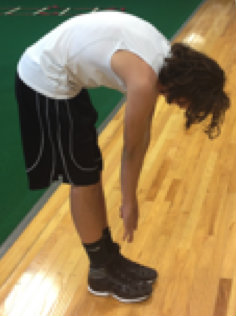
Using this individual on the right as an example, he must have tight hamstrings, right? Just like almost every other high school male athlete. Some people might say it is his hip flexors, and bravo for expanding your scope. Even if it is the hip flexors, why? Barring an injury that has required four-plus weeks of immobilization or a recent actual growth spurt, tissue length rarely is the cause of this (in my observations of training several hundred middle school, high school, and college athletes every year). So again, why?
Instability. The body will always generate tension to provide stability—that is the only strategy it has! Many times, this instability can come across as a mobility issue because the tension locks things down to provide stability. If we begin to stretch the area where tightness is presenting itself, we are actually making it harder for the brain to stabilize the area. We have made it harder to generate tension.
For this athlete, the fix began with addressing a specific tender point in his superficial back line (Read Anatomy Trains for an explanation if you’re not familiar). We followed the soft tissue work up with some movement-based mobility drills that not only incorporate flexibility, but different basic movement postures and positions that are mapped within our brain (as demonstrated in the pictures from our Movement Restoration Workshop at UCLA).
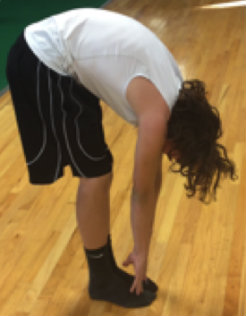
After we addressed his tender points and basic movement patterns, we went straight into a kettlebell deadlift for 2-3 sets of 15 reps at a relatively light load. All of this took place in the span of ten minutes. The result?
A toe touch. Five weeks later, he has maintained that toe touch (which he hadn’t done since grade school his parents tell me.)
The soft tissue work can be as great as some hands on manual work—depending on what you legally can and cannot do—or as good as some targeted foam rolling or lacrosse ball work. This must be followed with some mobility work (stretching fits well here, but it has to be based on something, like the FMS, not where you feel the tightness) and then the affected patterns must be loaded in some manner.
Blindly Stretching Is Like Randomly Training
Is stretching wrong? No. But blindly stretching, like randomly training, it isn’t the most effective. If you don’t know where you are going, any road will get you there (I’m borrowing that from Dan John). However, many times it will keep you in the same place. There are many great stretches that require the body to generate stability at the same time as working through mobility issues (the half kneeling hip flexor stretch, the lizard, the arm bar, the Brettzel, the windmill). “Stretching” is a lot like cardio—if you can do it while reading a magazine, the newspaper, or your iPhone, it probably is a waste of your time.
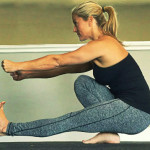
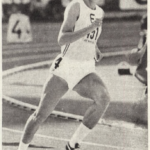
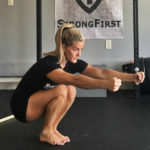
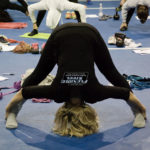


Great article, Brandon. Many very valid learning points and food for further thought.
Stretching passively without technique work or stability/strength training is a recipe for frustration.
Thank you for sharing.
Ekaterina – oh man, that is an old article. I’m surprised people are still reading it.
Thank you for the kind words. I’m glad you got something out of the article – it sounds like you are already on the path to making a positive impact.
Stretching is important for injury prevention, such a broad answer so ill clarify. I’ve seen injuries in rugby where a person in the scrum has gone down, and his right arm was stretched back so far that he tore his rotator cuff. Mind you the distance until the body could be supported by the ground was centimetres away. If he had the flexibility needed he would not have torn his cuff.
There are many examples like this; kicking a football and the leg coming so high that the hamstring tears.
How does the article not take into account such clear examples?
Yes the body will tighten muscles in order to support itself. But excessive tightening is due to posture imbalances.
The spine is a very beautiful thing, the way it shapes and forms to be able to support the upper body and head region is taken for granted. Sometimes due to slouching the spine will have to take an inefficient form causing muscles to tighten as the body tries to keep the body from tipping.
Great example using the high school kid who previously (since grade school) was unable to touch his toes. I am 37 years old (former Div. II soccer player) and until I started working with an FMS certified instructor five months ago, I was never able to touch my toes. Recently I started to slip and we went straight back to the core. Toe touches are back.
Great article!
Just want to point out that I have an absolute reason for stretching…… while I know this article does not argue against it, consider the older individual…… I stretch because as an adult I want to maintain the ability to wash my own back, and put my own suntan lotion on everywhere I need to…. I like being able to paint my own toenails and perform daily personal activities without restriction….. I run (jog) and find no restrictions to my exercise routines if I don’t stretch well…. it does not affect my rather modest performance that I can determine….. but failing to stretch does affect my range of motion for daily tasks that I find important and am likely to consider important for the rest of my life…. just a humble opinion for a reason to maintain good flexibility…… I am not a trainer or any kind of seriously physically educated individual…. but I have been around long enough to know that the capabilities of the human body are limited by a number of factors, and the reduction of strength, speed and flexibility (of both body and mind) can be a part of the aging process …. and will inevitably be a part of the aging process if direct action to prevent that decline is not taken! perhaps even then it is inevitable but certainly that process of decline can be halted for a while and slowed dramatically… this is why I stretch 🙂
After all…. why would anyone choose to limit their capabilities
Great concepts for an individual who is attempting to interpret what stretch can do for or against performance (and because of the lack of research this includes everyone implementing a stretch-related activity). The problem with the research on stretching, as if there is only one, is the fact that very little is being done on a molecular level. The molecular level is dynamic and changes just as much as the synergistical patterns developed within our nervous system. A few questions, of many, that need to be asked are: What is the hysteresis of the pathological/ non-pathological tissue? How does stress/strain curve change as velocity changes in different tissues (each tissue has a different cellular/extra-cellular matrix associated with it, which is why universal principles are often contraindicated in the prescription of rehabilitation exercises- meaning, what has shown to apply to the achilles tendon may not exactly apply to a rotator cuff tendon)?” How does the threshold change within peripheral receptors influence the change in patterning within the nervous system (how do we revert to compensatory or primitive patterns, such as plantar grasp reflex)?
Stretching is a concept that persists in many dynamics of training, such as eccentric loading for tendenosis or plyometric training. Once we start to understand how the molecular elements are influenced then we can maybe prescribe stretching more methodically. With this being said the process to do so will be long, remember no two tissues within the body are the same and it is dangerous to infer training benefits from one area of the body to another. So, in summation, great article and tough topic to understand.
Excellent post. Far too many trainers recommend to stretch stretch stretch with no measurable baseline to see if it’s actually creating lasting change.
That said, the recommended stretches in the article are awesome. The crawling lizard, brettzel (2.0, and leg extended versions as well), kneeling hip flexor stretch, arm bars, and windmills are all stretches I use with myself and my clients.
“Any road will get you there if you don’t know where you are going.”. Lewis Carroll said it originally. Dan John quoted it in Easy Strength. On of my favorite quotes. And one that more people should live by.
“[W]e give our muscles way too much credit – all they do is respond to a signal from the brain to turn on.”
That’s a great line.
Good read. In the same ballpark, Stuart McGill recently published a study concluding that passively increased range of motion (via stretching, etc) doesn’t translate to an increased range of motion in functional movements like squats and lunges. Implied but not stated outright was that movement training is the key to increasing range of motion in an accessible way. I reckon that was part of what you were getting at with the KB DL.
http://www.bodybuilding.com/fun/research-roundup-v8-breaking-insights.html